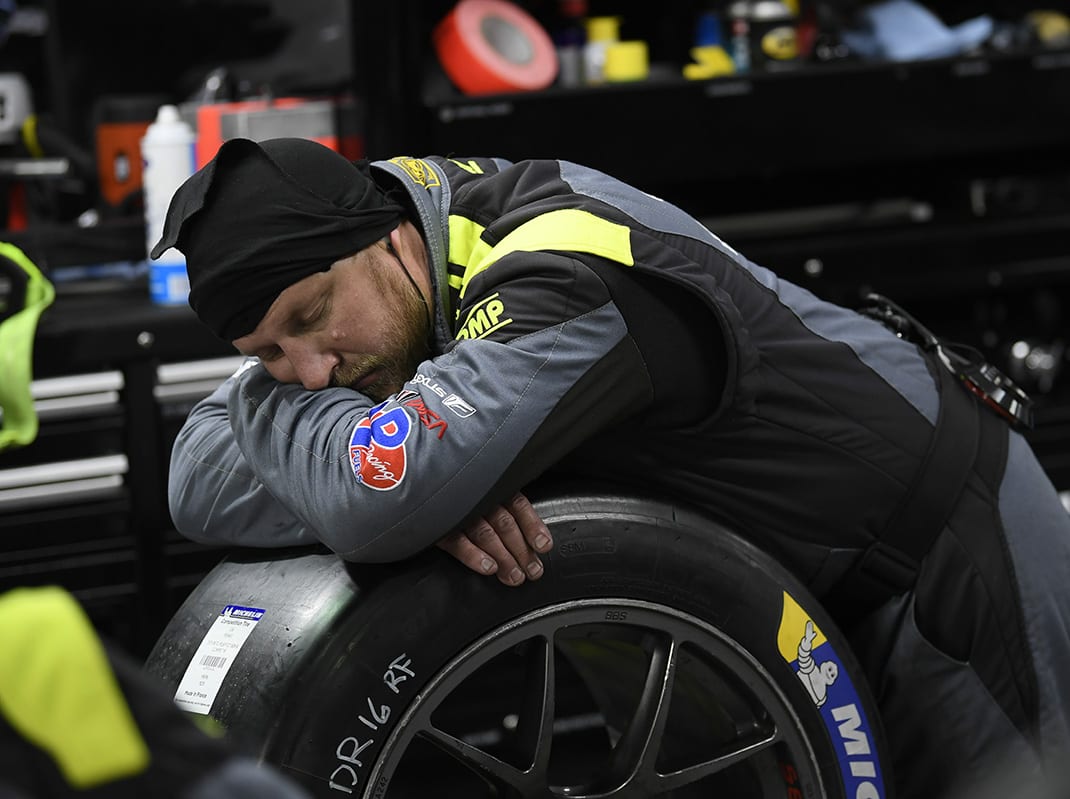Everybody knows 24-hour races like the Rolex 24 At Daytona and the 24 Hours of Le Mans are a grind, but that’s a small part of the total picture. The races are the culmination of meticulous preparation that begins long before the green flag waves.
At-track working conditions for the crew have changed through the years. For decades, the diet came from all food groups — fat, sugar and caffeine. Lucky crew members took cat naps in folding chaise lounges. Many slept on the cold pavement using whatever they could for a pillow.
A pit lane visit during last year’s Rolex 24 revealed enclosed crew spaces behind the pit box and tables crammed with healthy snacks, hot and cold beverages and, yeah, an assortment of candy bars.
Veteran broadcaster David Hobbs recalls “the good old days” when he won Le Mans twice as well as his time in the pits and announcer’s booth.
“It’s been 30 years since I’ve run Le Mans and things have changed a lot,” Hobbs said. “Obviously you needed to get a lot of sleep and getting extra sleep is easier said than done. You got to bed a couple nights at the usual time, then nothing else. Of course, you need to eat well but back then people didn’t worry about that sort of stuff too much.
“Physical endurance in some ways was more than today because there were only two drivers involved and you ended up doing a lot more during the race,” he remembered. “You’d end up with as close as a 50-50 split as possible. You couldn’t drive for more than four hours at a stretch. That meant the guy out of the car had at least four hours off.
Down time was very hick. The very best would be a small caravan (travel trailer) where you flop down (in a wet driver’s suit) when you’re off the course.”
Hobbs sees it differently these days.
“So now, I think the preparations are more stringent. The cars are faster and more important, they develop way, way more G-loading so it’s tougher on the body,” he explained. “There are huge braking forces up to 5Gs under braking and between 3 and 4Gs side load so the driver needs to be in good shape, the neck in good physical shape.”
Back then, the cars weren’t nearly as robust. Not so now.
“You do drive much harder during your stint because the cars are so reliable,” Hobbs noted. “You can drive flat-out for your stint and not have to worry about babying the brakes, the gearbox and the engine. You drive the thing with your foot flat to the floor and so you drive much harder. It’s much more intense driving.”
Hurley Haywood has five Rolex Daytona watches. In addition, he has won Le Mans three times and has experience as a driver and team manager.
Like Hobbs, he has a broad perspective.
“Back in the ’70s, ’80s and ’90s the drivers were relatively healthy but they didn’t do the regimens now set forth that they have to adhere to,” Haywood said. “Strength, endurance, mental clarity, all these things that are important with a modern car we didn’t’ have to worry about. We were in good shape and when you think about it, driving a prototype a (Porsche) 962 with all that downforce from ground effects it was very, very taxing from a physical standpoint.
“So, the drivers knew they needed to be in good shape and have their endurance but there was no real regimen for it,” he continued. “When you take a guy from the modern era and you put them in those cars that we drove they’re totally amazed that we were able to run those cars for two and three hours and get back in the car a couple hours later and drive again.”
Click below to keep reading.
